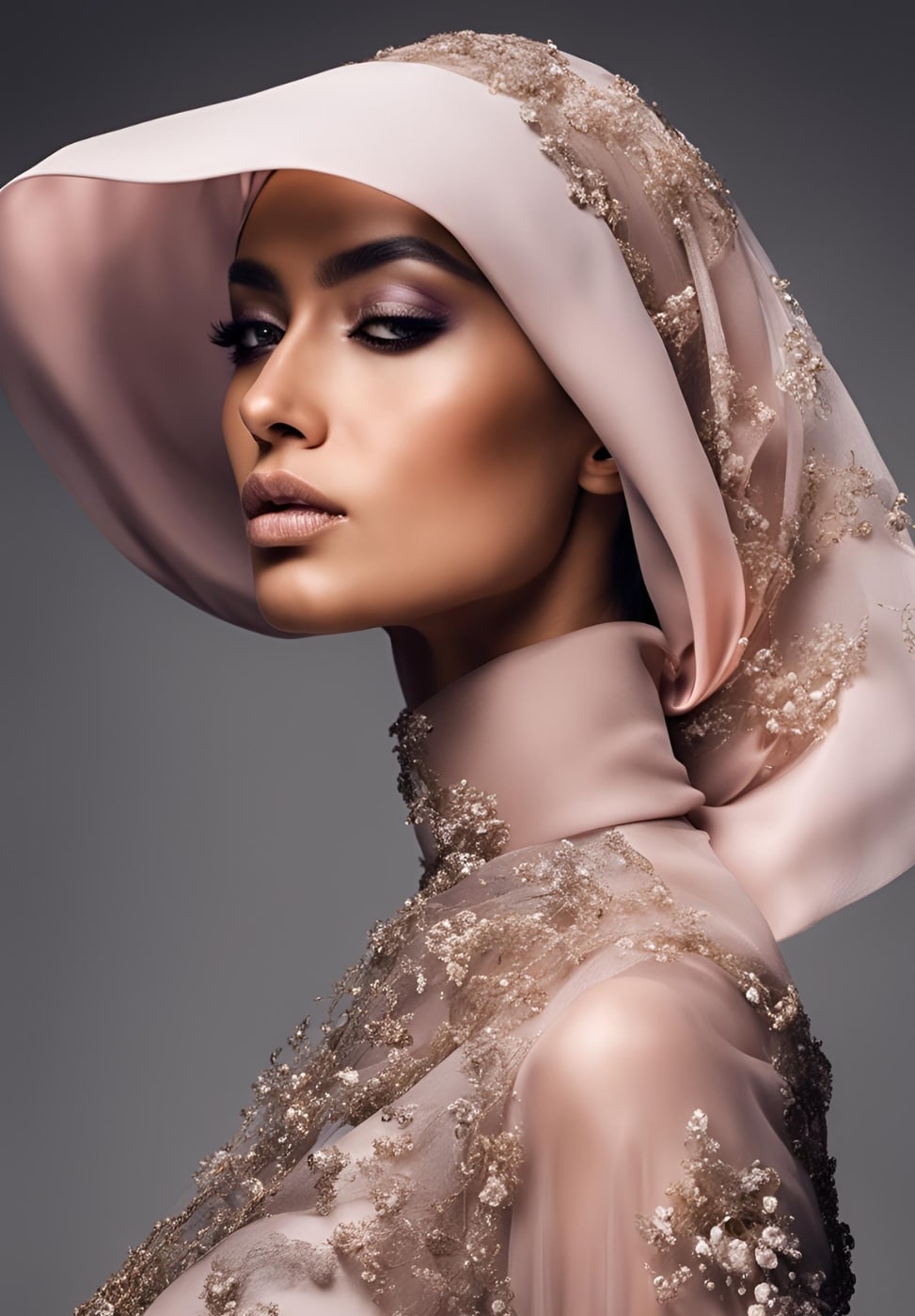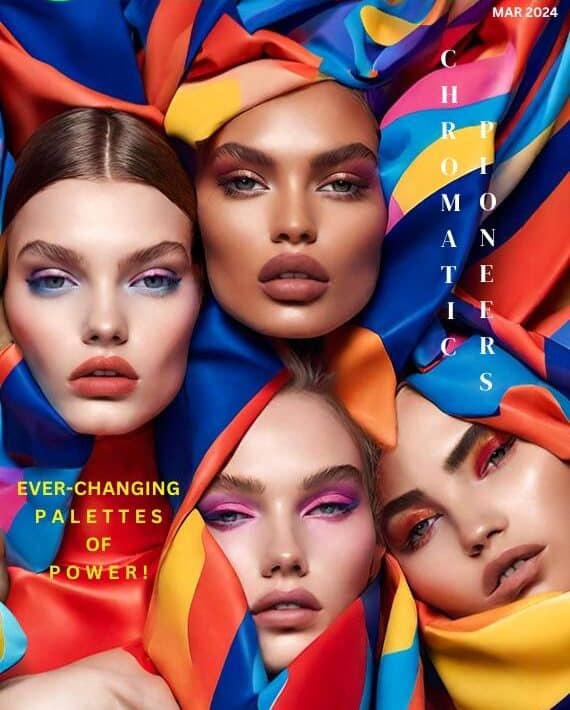Moonlit Conversations & The Women Who Shape Them

They say fashion tells a story, but for Dina Yassin,…
“And He found you lost and guided you.” – Surah Ad-Duha (93:7)
It happens every year, like clockwork.
The moon appears, delicate and silver against the night sky, and just like that—Ramadan arrives. The world slows, the air shifts, and suddenly, I find myself craving stillness the way I once craved dessert before Maghrib.
But this year? This year is different.
This year, Ramadan and International Women’s Day share the same sky, intersecting in a way that feels less like coincidence and more like divine choreography. A month of spiritual renewal aligning with a day that honors the architects of grace—women.
And as a Muslim woman, I find myself thinking: what does it mean to carry both?
To navigate faith while rewriting the narrative. To honor tradition while evolving beyond it. To be soft and strong, devoted and daring, present in the world while still rooted in something deeper.
Maybe the answer isn’t in the grand gestures, but in the in-between moments.
The ones where my mother stands in the kitchen before dawn, fingers tracing the rim of her tea cup, eyes distant in pre-suhoor reflection. The way my grandmother used to recite du’as under her breath like secret spells, threading prayers through our days like beads on a misbaha, each one grounding us in ways we didn’t even realize. The conversations whispered between sisters, between friends, between generations of women who have fasted through war, through heartbreak, through joy, through change.
Ramadan, much like womanhood, is not a singular experience. It is lived, it is felt, it is shaped differently by every woman who walks through it.
For some, it is found in ancestral rituals—in hands kneading dough, in Qur’an recitations that feel like home, in the familiar scent of incense curling through the air before Fajr.
For others, it is found in the quiet rebellion of self-preservation—choosing rest when exhaustion was once expected, redefining what spirituality looks like beyond the walls of a mosque, understanding that devotion is not just in what you do, but in how you feel while doing it.
Somewhere between the Ramadan of my childhood and the one I live now, I have learned that faith is not just a checklist of rituals—it is a rhythm, a language, a conversation.
And this year, as I step into Her Sacred Season, I realize—I am still learning.
The Myth of The Perfect Ramadan Woman
Let’s talk about her—the woman we’ve all imagined at some point.
She wakes up before dawn, effortlessly floating through suhoor preparations. She prays all her prayers on time, in deep, uninterrupted reflection. She makes the perfect iftar, remembers to hydrate properly, balances faith, family, work, and self-improvement like a spiritual Olympian.
She is disciplined, elegant, and never—ever—hangry.
But here’s the thing: she doesn’t exist.
Or if she does, she is one version of what Ramadan can look like, not the version.
Because for every woman who finds peace in long nights of prayer, there is another who finds faith in the stolen moments—a whispered du’a in traffic, a quiet act of kindness, a conversation with God that sounds less like formal supplication and more like “Ya Allah, it’s been a day.”
For every woman who sets the iftar table with precision and care, there is another who grabs a date and eats it between meetings, whispering “Bismillah” before her next task.
For every woman who leans into tradition, there is another who is still trying to unlearn the idea that faith must be performed to be valid.
And maybe, just maybe—all of them are right.
Because faith is not one-size-fits-all. It never has been.
The Women Who Carry The Moon
When I think of Ramadan and womanhood, I think of my mother—fasting through pregnancies, through exhaustion, through the ever-growing list of things women are expected to hold.
I think of my grandmother, who carried Ramadan like a well-kept secret, who made faith feel less like a duty and more like a sanctuary.
I think of the women I know—the ones who wake before dawn to prepare suhoor, and the ones who let someone else take over because, for once, they choose ease over exhaustion.
I think of the ones who gather for iftar in groups, and the ones who break their fast alone, staring out of apartment windows at a world slowing down just for a moment.
I think of the ones who wear faith visibly, wrapped around them like silk, and the ones who carry it quietly, tucked beneath their ribs, unseen but unshakable.
And I think of the girls who will come next.
The ones who will stand in their parents’ kitchens before suhoor, gripping a glass of water, feeling the weight of this month for the first time.
What will faith look like for them?
Will they inherit a Ramadan that allows them to exist fully—in their strength, in their softness, in their evolving understanding of spirituality?
Will they grow up knowing that they do not have to be one version of a woman, but all the versions she chooses to be?
Her Sacred Season
So here we are—standing in the intersection of Ramadan and International Women’s Day, of faith and evolution, of devotion and self-discovery.
This is Ramadan. But this is also hers.
Hers to observe in the way that feels right. Hers to shape, to rewrite, to embody. Hers to experience not just as a responsibility, but as a gift.
Because if Ramadan has taught me anything, it’s this:
Women have always carried the moon. But this time, we let it carry us, too.
What's Your Reaction?
They say fashion tells a story, but for Dina Yassin, it’s more than just storytelling—it’s an art, a science, and a little bit of magic. As the Co-Founder, Chief Storyteller, and Editor-in-Chief of GAZETTA—among many other titles—she’s the woman behind the words, the visionary shaping narratives, and the creative force redefining luxury fashion journalism in the digital age. With over two decades of experience in luxury brand consulting, creative direction, and trend forecasting, Dina has worked with some of the most coveted names in the industry—think Van Cleef & Arpels, Kenzo, Bvlgari, Hermès, and Chloe—all while keeping her finger firmly on the pulse of what’s next. Her work has graced the pages of Vogue Arabia, Harper’s Bazaar, Condé Nast Traveler, Mojeh Magazine, Vanity Fair, Marie Claire, 7 Corriere, and The Rake—among many other top-tier titles—solidifying her reputation as a fashion and luxury thought leader. But here’s the twist—Dina isn’t just reporting on the future; she’s creating it. Under her leadership, GAZETTA introduced EVVIE 7, an AI-driven journalist pushing the boundaries of editorial innovation. Because in a world where algorithms influence aesthetics as much as designers, Dina ensures GAZETTA stays one step ahead, seamlessly blending technology, culture, and high fashion into a platform that speaks to the modern, forward-thinking luxury consumer. Beyond her editorial expertise, Dina is a renowned luxury brand consultant, trend strategist, and creative powerhouse who thrives at the intersection of fashion, culture, and digital storytelling. Whether she’s consulting on luxury branding, forecasting emerging trends, directing high-profile fashion campaigns, or curating immersive experiences, she’s always asking the big questions—What’s next? Who’s shaping it? And most importantly, how do we make it unforgettable? One thing is certain: Dina Yassin is always at the forefront of what’s next.



